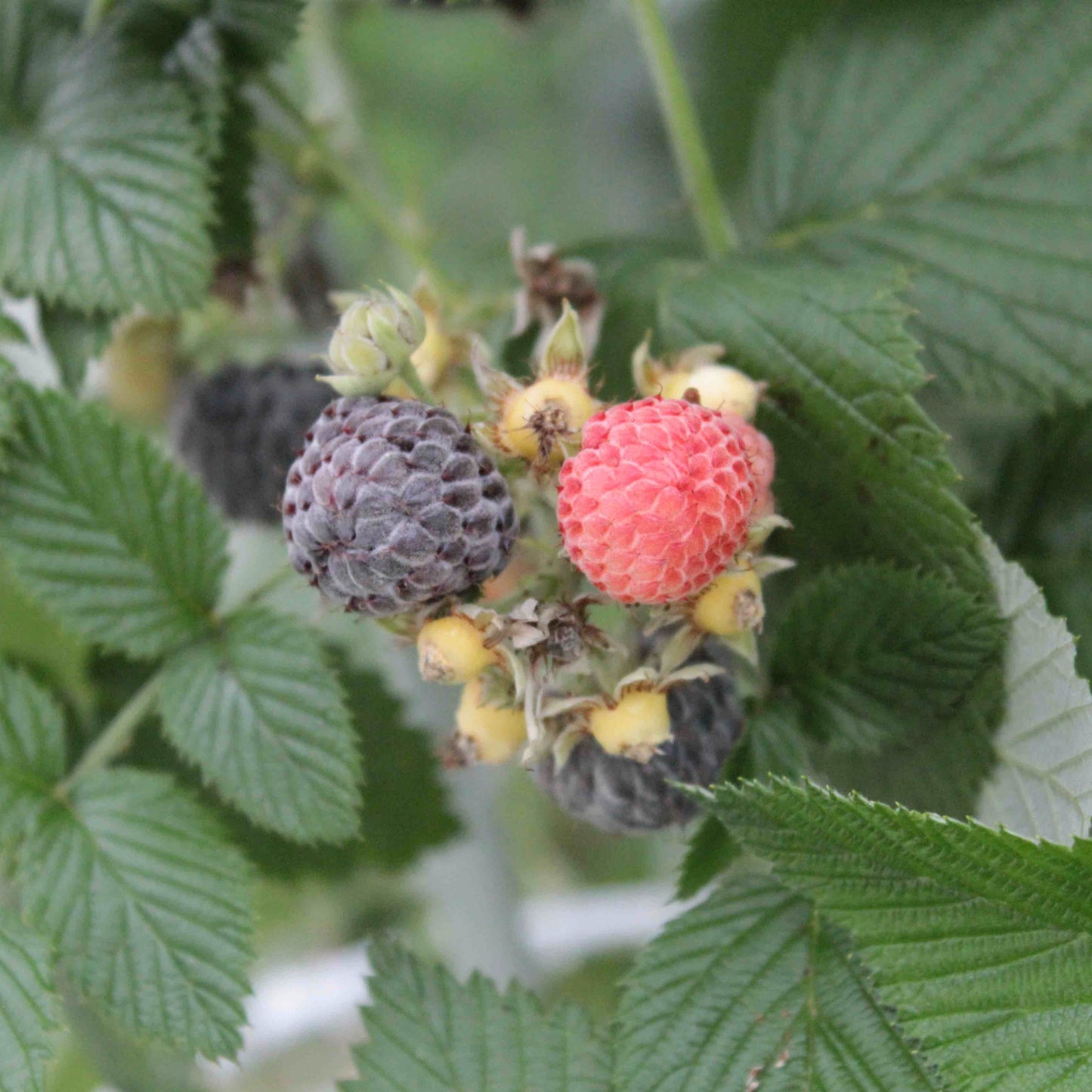Rubus occidentalis 'Bleu Nuit'
'Bleu Nuit' Raspberry – Rubus occidentalis
'Bleu Nuit' Raspberry – Rubus occidentalis
Exposure
- Sun
- Part-sun
- Part-shade
Rusticity
Bloom time
- May
- June
- Unique blue-black raspberries
- Does not sucker (non-invasive)
- Very hardy variety
- Large, firm, and flavourful fruit
- Decorative bluish canes (thorny)
Discover a raspberry colour you don't see often with 'Bleu Nuit'! This new and very hardy variety stands out with its unique, deep blue-black fruit. Unlike traditional red raspberries, it does not produce suckers from its roots, which makes it much easier to control in the garden. Its thorny, bluish canes bear highly decorative clusters of fruit during the summer.
The Harvest: Production and Flavour
The production of 'Bleu Nuit' is average but reliable, beginning in the second year after planting. The fruit ripens progressively in clusters throughout August, allowing for a staggered harvest. It should be noted that the yield may naturally decline after 7 to 8 years, which is typical for raspberries.
- Harvest Period: August (or as early as July if canes are not pruned)
- Visual Description: The fruits are large. They offer a superb display of colour as they ripen, transitioning from red to a dark, almost black blue with magnificent purplish hues.
- Flavour Profile: The flesh is firm, with an interesting texture that is both melting and slightly crunchy due to the noticeable drupelets (seeds). Its flavour is rich and sweeter than that of commercial raspberries.
- Culinary Uses: Excellent for fresh eating, where its unique colour will surprise. It is also perfect for jams, sauces, pies, and for flavouring desserts.
Planting Guide
To ensure a successful planting, follow these key steps:
- The Ideal Location: Choose a site in full sun for maximum production. Growing in part-shade is possible, but the fruit yield will be reduced.
- Soil Preparation: The black raspberry appreciates cool, rich, loose, and above all, well-drained soil. An ideal soil pH is slightly acidic to neutral, which corresponds to most garden soils. To enrich your soil, generously incorporate Botanix Composted Manure with Peat, Seaweed and Crustaceans or Botanix Planting Mix at the time of planting.
- Planting: Dig a hole twice as wide as the root ball. Place the plant so that the top of the root ball is level with the ground. Fill, tamp down lightly, and water well.
- Pollination: Self-fertile.
Care Guide
- Watering: Ensure regular watering to maintain cool soil, especially during dry spells, to get larger and juicier fruit.
- Fertilizing: An annual application of compost at the base of the plant is very beneficial. Supplement with a small fruit fertilizer in the spring to support production.
- Pruning: This is a crucial step for this variety, carried out in two stages to ensure a good harvest and control growth.
- 1. Summer Pruning (Tipping): In early summer, when the new green canes reach 75-90 cm (30-35 in), cut their tips (the top 5-10 cm). This forces the plant to create lateral branches, which will bear fruit the following year.
- 2. Dormant Pruning (Late Winter): Before new growth begins, cut all the old, dry canes that have already fruited right down to the ground. On last year's canes, shorten the lateral branches to about 8-10 buds.
- Protection:
- From Birds: As the fruits begin to ripen, it is highly recommended to cover your plants with protective netting.
- Winter: Very hardy, special protection is not generally necessary in its hardiness zone.
Plant details
Dimensions
Dimensions
Characteristics
Characteristics
Habit:
- Bushy
Flowering colours:
- White
Plant needs
Plant needs
Watering:
- Cool soil
Maintenance:
- Medium
Soil requirement:
- Rich in humus
- Loose
- Well drained
Features
Features
Resistance:
- Cold
Attract:
- Birds
Use:
- Specimen
- Flower bed
- Mass planting
- Fruit hedge
Attribute:
- Decorative fruits
- Non-invasive (does not produce suckers)












